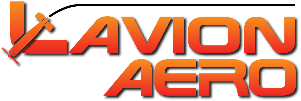Building Zenith Aircraft
Zenith aircraft are relatively easy to build compared to other aircraft.
Here are a few hints and tips to ensure your build is truly ready for flight.
- Make sure you plan for and install ADS-B out and in regardless of how 'old school' you want your panel to be or where you think you're going to fly. There are many lower-cost options for this. This is such a huge safety tool that I feel it should be mandatory in all aircraft.
- Verify control surface neutral position and deflections are within the specs stated in the plans.
- Verify control cables are tensioned correctly (typically 25 lbs, with exception). Make sure the nose is off the ground and the strut is at the bottom of it's travel before setting the rudder cable tensions.
- Verify full-throttle RPMs are appropriate as specified for engine/prop, and fix it if not at specs. Don't assume it's going to get better.
- Verify ALL engine gauges are working and reading correctly - prior to and after engine start.
- Verify the intercom is working correctly at all engine RPMs (have someone sit in the plane as well during full/high-throttle). Make sure there's not excessive noise in the intercom. (I highly recommend ANR headsets in Zeniths)
- Verify the pitot system is not leaking and airspeed indicator is accurate - make a manometer to test and calibrate (just Google it, there are a number of designs).
- Get the transponder certified prior to first flight if possible. It cannot have mode C enabled if it's not been certified.
- Lubricate all piano hinges (LPS1 or equiv), flap/aileron/flaperon hinges (LPS2 or equiv), cables ends (LPS2 or equiv), and nose gear block (white lithium or equiv).
- Movements of any controls should not result in any squeaks or binding in all configurations including zero to full flaps. Don't let anyone tell you that flaperon binding at full flaps is normal, it is NOT!
- Ensure the nose wheel/ rudder move freely at full extension (side stubs settled in the V-block). You will be using a LOT of rudder in flying the Zenith and any tightness/stickiness will work against you. Do not paint or powdercoat the strut in the areas where it will slide in the bearing block.
- Make sure the landing gear isn't backwards (more common than you'd think)
- The elevator trim tab moving up causes nose to go down in flight and vice-versa. Ensure the trim switch is labeled correctly. As a standard - typically pressing the top button of the trim switch should cause the nose to lower (down trim) and vice-versa. Think of the trim switch mounted on a horizontal surface - pressing the forward portion of the trim switch should be like pushing the stick forward. That same orientation should be kept if mounted vertically on the panel.
If you have any questions on your build, don't hesitate to reach out to Phil Cook.
